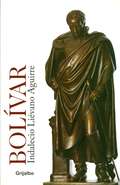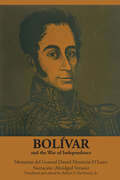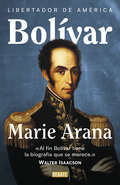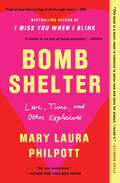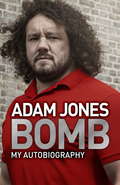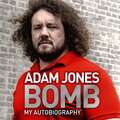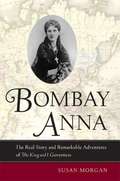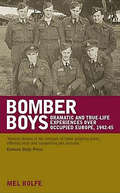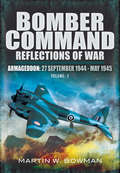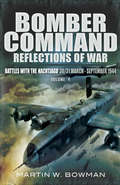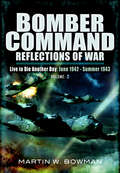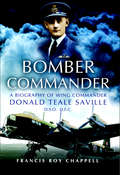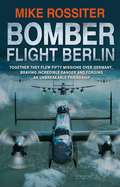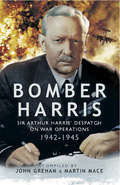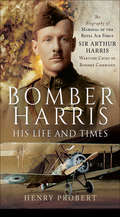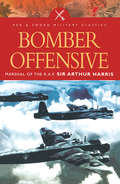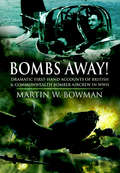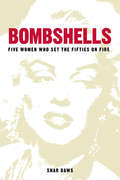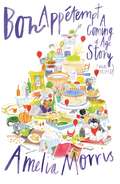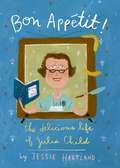- Table View
- List View
Bolívar
by Indalecio Liévano AguirreLa más completa biografía del gran Libertador en las letras de uno delos mejores escritores de historia en Colombia. Atesorado como la mejor biografía del Libertador jamás escrita #y ya soninumerables-, este libro nos invita a mirar de cerca la intensa vida deun hombre excepcional, a la vez soldado, político, escritor, legisladory humanista. Sus épicas batallas, sus ideales, sus tormentosos romances,sus formidables enemigos y sus escasos amigos, su pensamiento, todo estáaquí narrado con impecable maestría. #La esclavitud es hija de las tinieblas, un pueblo ignorante es elinstrumento ciego de su propia destrucción
Bolívar and the War of Independence: Memorias del General Daniel Florencio O'Leary Narración (Texas Pan American Series)
by Daniel Florencio O'Leary&“Without a doubt the best work ever published in the English language on the life and deeds of Simón Bolivar. . . . Full of interesting vignettes.&” ―Inter-American Review of Bibliography The overthrow of Spanish rule and the birth of new republican governments in northern South America at the dawn of the nineteenth century were in large part the work of one man—Simón Bolívar. Bolívar was not only the soldier who built a patriot army from a small band of exiles and led them victoriously across Venezuela and down the spine of the Andes as far as Potosí; he was also the statesman who framed the new republics and called the Congress of Panama in pursuit of his dream of uniting all the South American republics in a single confederation. He was, truly, the Liberator. This narrative by his friend and chief aide, Daniel Florencio O&’Leary, has long been recognized by Spanish American scholars as one of the most important historical sources for a major part of Bolívar&’s life. O&’Leary took an active part in the wars for independence, first as a young officer recruited in the British Isles, and later was entrusted with diplomatic missions. His firsthand knowledge of the events of the period, his access to relevant documents, and his close association with major figures in the struggle made O&’Leary a particularly valuable chronicler and biographer. Bolívar himself, shortly before his death, requested that O&’Leary write the story of his life. O&’Leary&’s meticulous attention to military and diplomatic maneuvers and his keen, sometimes acrid, comments on both men and events give not only a vivid portrait of Bolívar—the man and his achievements—but also a remarkable insight into the autocratic-minded O&’Leary. Though O&’Leary&’s devotion to, and admiration for, his Chief make for an occasionally partisan view, his stark account of the hardships and disappointments that Bolívar and his armies overcame against almost impossible odds does much to balance the narrative. In his abridged translation, Robert McNerney has omitted the Apéndice, documents that O&’Leary, had he lived, undoubtedly would have used as the source for completing his account of Bolívar&’s life. Numerous letters and documents scattered through the original text also have been omitted, leaving a highly readable biography.
Bolívar: Libertador de América
by Marie AranaUn relato biográfico vibrante que captura la épica historia de Simón Bolívar, El Libertador. Simón Bolívar se ganó el sobrenombre de El Libertador tras poner fin al dominio español sobre seis países. Su vida fue heroica, trágica y legendaria: viajó del Amazonas a los Andes, libró eternas batallas, forjó alianzas entre razas rivales... Partiendo de un gran abanico de fuentes, Marie Arana captura un vívido retrato de la Suramérica de inicios del siglo XIX, la que forjó a Bolívar y lo convirtió en un valeroso general, un estratega brillante, un escritor portentoso y un político sin parangón; en definitiva, uno de los personajes más admirados de Latinoamérica. Bolívar es una biografía trepidante en la que el lector hallará la imagen de una vida trágica capturada en todo su esplendor y un conmovedor manifiesto de la verdadera esencia del pueblo latinoamericano. Reseñas:«Al fin Bolívar tiene la gran biografía que merece. Ha sido el mayor líder de la historia de Latinoamérica y su vida está repleta de lecciones sobre la pasión y el liderazgo. Este libro se lee con la facilidad de una magnífica novela, pero como obra histórica, su nivel de documentación la pone a la altura de una obra maestra.»Walter Isaacson «Bolívar tiene un enfoque magistral, es una obra construida con un sentido histórico y un estilo casi cinematográficos. Un logro impresionante, destinado a ganar premios literarios destacados.»Joseph J. Ellis, Washington Post Book World «Maravilloso. En este relato de Arana, tan ameno como intenso, Bolívar cobra vida, una vida épica. Contribuye a definir la biografía de Bolívar con una fuerza y un estilo fuera de lo común.»Hector Tobar, The Los Angeles Times «Arana aporta un lúcido testigo de los ideales, las alianzas y de la debilidad humana que condicionaron a Bolívar en sus decisiones y que, por consiguiente, cambiaron el cursode la historia en las Américas.»The New Yorker «Con gran intuición, Arana captura con destreza la audacia y la brillantez de Simón Bolívar, un líder venerado y menospreciado a su vez.»Kirkus Reviews «Arana es una investigadora incansable, una historiadora intuitiva y una escritora brillante, lo cual queda reflejado a la perfección en esta definitiva y sobrecogedora biografía del gran Simón Bolívar, el libertador de América del sur.»Booklist (Top 10 Biografías del año) «La prosa de Arana puede llegar a ser preciosa. Una novelista convertida en historiadora, su relato de la historia de Bolívar es maravillosa. Dos siglos después de su muerte, Bolívar sigue desatando pasiones como no logran hacerlo otros personajes más célebres. En la biografía de Arana descubrimos el porqué.»Giles Tremlett, The Guardian «Se lee como una novela, repleta de retratos, escenarios y escenas memorables y construida con mucho brío y con detalles realmente vívidos.»Enrique Krauze, The New York Times Review of Books «Una biografía extraordinariamente equilibrada y empática. [Arana] tiene un gran instinto cuando se trata de hacer que los detalles cobren vida.»Nicholas Shakespeare, The Telegraph
Bomb Disposal in World War Two
by Chris RanstedFor this book, Chris Ransted has researched some of the lesser known events and personalities relating to the early years of Explosive Ordnance Disposal in the UK. Daring acts of cold blooded bravery, and ingenuity in the face of life threatening technical challenges, are recounted throughout the book.Included are numerous previously unpublished accounts and photographs that describe the disarming of German bombs, parachute mines, and even allied bombs found at aircraft crash sites. In addition, the book contains the most comprehensive account ever published of the Home Guards role with the Auxiliary Bomb Disposal Units, and details of conscientious objectors involvement with unexploded bombs.This is not only a valuable research tool for serious researchers already well read on the subject, but also a fascinating read for those with no previous knowledge of wartime bomb disposal at all, and of course a must read for anyone interested in the subject.
Bomb Shelter: Love, Time, and Other Explosives
by Mary Laura PhilpottFrom the bestselling author of I Miss You When I Blink and &“writer of singular spark and delight&” (Elizabeth Gilbert, #1 New York Times bestselling author) comes a poignant and powerful new memoir that tackles the big questions of life, death, and existential fear with humor and hope.A lifelong worrier, Philpott always kept an eye out for danger, a habit that only intensified when she became a parent. But she looked on the bright side, too, believing that as long as she cared enough, she could keep her loved ones safe. Then, in the dark of one quiet, pre-dawn morning, she woke abruptly to a terrible sound—and found her teenage son unconscious on the floor. In the aftermath of a crisis that darkened her signature sunny spirit, she wondered: If this happened, what else could happen? And how do any of us keep going when we can&’t know for sure what&’s coming next? Leave it to the writer whose critically acclaimed debut had us &“laughing and crying on the same page&” (NPR) to illuminate what it means to move through life with a soul made of equal parts anxiety and optimism (and while she&’s at it, to ponder the mysteries of backyard turtles and the challenges of spatchcocking a turkey). Hailed by The Washington Post as &“Nora Ephron, Erma Bombeck, Jean Kerr, and Laurie Colwin all rolled into one,&” Philpott returns in her distinctive voice to explore our protective instincts, the ways we continue to grow up long after we&’re grown, and the limits—both tragic and hilarious—of the human body and mind.
Bomb no bomb: 13 years in Trento in 1967
by Cristiana PivariAnnalisa is a teenager who lives in Trento during the time of South Tyrolean terrorism, an era when the Southtyrol-freedom committee, which goal was the autodetermination of the region, through the secession from Italy and annexion to Austria, thus obtaining, under the sovereignity of this last one, the politic unification of the historical region of Tyrol, puts bombs everywhere as an intimidatory act. Annalisa is scared of the bombs and seeks on the Grandpa’s newspapers anything related to the topic, but she’s just a little girl after all, who falls in love with a schoolmate, has her first period and writes everything in detail in her diary. Then the bomb explodes also in Trento station, and at the same time a girl is found dead in a fuel tank. News that shocks the young Annalisa, but doesn't stop her to peacefully live her puberty, because life always trumps everything after all.
Bomb: My Autobiography
by Adam JonesIn rugby, there are the Flash Harrys and the Glory Boys: the fly-halves who run, kick and dazzle; the scrum-halves who nip and dart; the wingers who step and glide. These are the players who get the crowd on their feet, who set stadiums abuzz. But they only get to do these things because other, less glorified figures do all of the donkey work. Adam Jones is one such figure. And for a decade he was one of the world's best. On many occasions when George North or Shane Williams were careering under the posts to score a try, and the crowd was engulfed in rapturous joy, Adam Jones would be hauling himself up from the turf, spitting blood and mud, and massaging his aching neck. He hadn't scored the try; but more often than not it was his graft and strength which had made it. This is the story of 'Bomb': the self-effacing manual labourer from the Swansea Valley who traded laying paving slabs for running out in some of the world's most imposing sporting citadels. He rose to the pinnacle of his sport, winning virtually everything there was to be won: Grand Slams, Six Nations Championships, Lions tours, Pro12 titles. In a nation of rugby heroes, Adam Jones has become a legend. Only six Welshmen can say they've won three Grand Slams. He is one of them: not just as a bit-part player, but as the beating heart of the most successful squad in Welsh rugby history. His was one of the first names on the team sheet. He was - literally and metaphorically - the cornerstone of this Welsh side. In his autobiography, Jones reveals exactly what goes on in the murky depths of the front row: the tricks, the techniques, the physical and psychological warfare; and the mental fortitude it takes to endure in one of the hardest positions, in one of the world's toughest contact sports.
Bomb: My Autobiography
by Adam JonesIn rugby, there are the Flash Harrys and the Glory Boys: the fly-halves who run, kick and dazzle; the scrum-halves who nip and dart; the wingers who step and glide. These are the players who get the crowd on their feet, who set stadiums abuzz. But they only get to do these things because other, less glorified figures do all of the donkey work. Adam Jones is one such figure. And for a decade he was one of the world's best. On many occasions when George North or Shane Williams were careering under the posts to score a try, and the crowd was engulfed in rapturous joy, Adam Jones would be hauling himself up from the turf, spitting blood and mud, and massaging his aching neck. He hadn't scored the try; but more often than not it was his graft and strength which had made it. This is the story of 'Bomb': the self-effacing manual labourer from the Swansea Valley who traded laying paving slabs for running out in some of the world's most imposing sporting citadels. He rose to the pinnacle of his sport, winning virtually everything there was to be won: Grand Slams, Six Nations Championships, Lions tours, Pro12 titles. In a nation of rugby heroes, Adam Jones has become a legend. Only six Welshmen can say they've won three Grand Slams. He is one of them: not just as a bit-part player, but as the beating heart of the most successful squad in Welsh rugby history. His was one of the first names on the team sheet. He was - literally and metaphorically - the cornerstone of this Welsh side. In his autobiography, Jones reveals exactly what goes on in the murky depths of the front row: the tricks, the techniques, the physical and psychological warfare; and the mental fortitude it takes to endure in one of the hardest positions, in one of the world's toughest contact sports.
Bomb: My Autobiography
by Adam JonesIn rugby, there are the Flash Harrys and the Glory Boys: the fly-halves who run, kick and dazzle; the scrum-halves who nip and dart; the wingers who step and glide. These are the players who get the crowd on their feet, who set stadiums abuzz. But they only get to do these things because other, less glorified figures do all of the donkey work. Adam Jones is one such figure. And for a decade he was one of the world's best. On many occasions when George North or Shane Williams were careering under the posts to score a try, and the crowd was engulfed in rapturous joy, Adam Jones would be hauling himself up from the turf, spitting blood and mud, and massaging his aching neck. He hadn't scored the try; but more often than not it was his graft and strength which had made it. This is the story of 'Bomb': the self-effacing manual labourer from the Swansea Valley who traded laying paving slabs for running out in some of the world's most imposing sporting citadels. He rose to the pinnacle of his sport, winning virtually everything there was to be won: Grand Slams, Six Nations Championships, Lions tours, Pro12 titles. In a nation of rugby heroes, Adam Jones has become a legend. Only six Welshmen can say they've won three Grand Slams. He is one of them: not just as a bit-part player, but as the beating heart of the most successful squad in Welsh rugby history. His was one of the first names on the team sheet. He was - literally and metaphorically - the cornerstone of this Welsh side. In his autobiography, Jones reveals exactly what goes on in the murky depths of the front row: the tricks, the techniques, the physical and psychological warfare; and the mental fortitude it takes to endure in one of the hardest positions, in one of the world's toughest contact sports.(P)2015 Headline Digital
Bombay Anna: The Real Story and Remarkable Adventures of the King and I Governess
by Susan MorganThis biography shows, the real life of Anna Leonowens was far more fascinating than the beloved story of the Victorian governess who went to work for the King of Siam.
Bombe, keine Bombe
by Cristiana PivariAnnalisa ist ein Teenager, der zur Zeit des Südtiroler Terrorismus in Trient lebt. Die Selbstbestimmung Südtirols, die Abspaltung von Italien und die Annexion an Österreich, um unter dessen Souveränität die Vereinigung der historischen Region Tirol zu erreichen, wurde nachdrücklich verfolgt. Bomben wurden platziert. Annalisa hat Angst vor Bomben.Sie sucht in den Zeitungen ihres Großvaters nach allem, was damit zu tun hat. Aber sie ist noch ein kleines Mädchen und verliebt sich schließlich in einen Schulfreund, bekommt ihre Menstruation und notiert alles sorgfältig in ihrem Tagebuch. Dann explodiert eine Bombe im Bahnhof von Trient, gleichzeitig wird ein Mädchen tot aufgefunden. Das sind Fakten, die Annalisa aufwühlen, die sie aber nicht daran hindern ihre Jugend zu leben, denn am Ende dominiert das Leben.
Bomber Boys: Dramatic and True Life Experiences Over Occupied Europe, 1942—45
by Mel Rolfe&“Expertly researched . . . 20 different narratives in which these heroes venture out night after night on sorties throughout World War II Europe.&” —Plane and Pilot Three weeks after Stirling air gunner Doug Fry was reported missing over Germany his mother was still clinging to the vain hope that he was alive. Then a neighbor said she had seen him in the cinema just down the road. The airman and his crew had been filmed for a Bomber Command documentary shortly before they took off from Mildenhall to attack Remscheid. Three hours later four of the crew were killed, but it was another two months after she had also seen the poignant film that widowed mother of eight Winnie Fry knew her nineteen-year-old son, though wounded, was still alive. Lancaster pilot Victor Wood&’s aircraft arrived too early over Gelsenkirchen when the target was shrouded in darkness and the Main Force was miles behind. His 12 Squadron bomber was suddenly struck with terrifying force by flak and turned upside-down. An engine was on fire, the unconscious mid-upper gunner, slumped in his turret, was being sprayed with petrol and their bomb-load had been struck by shrapnel. Could Vic Wood get his crew back to base safely? These are just two of twenty dramatic Bomber Command stories in Bomber Boys. Night after night, the young men, some just out of school, went off on sorties, having pushed to the back of their minds the unpalatable awareness that they might never see another dawn. If death did not find them on the first few terrifying sorties they grew up very quickly in order to fight another day.
Bomber Command: Armageddon, 27 September 1944–May 1945 (Bomber Command #5)
by Martin W. BowmanThis is the fifth release in a series that provides a comprehensive insight into all aspects of RAF Bomber Command in World War Two. It begins in late September 1944 when the Allied Bomber Offensive was at its height, and takes us through to the end of the conflict. The crews' personal narrative puts you at the centre of each intense, isolated and harrowing episode of aerial combat as the pilots of Bomber Command attempted to stave off fears of tragic injury and death from fighters, flak and incessant operational pressure during raids on German cities, waterways, ports and oil installations. This continued until the Luftwaffe and the Nachtjagd effectively ceased to exist, their fuel supplies exhausted, their losses in airmen reaching an unsustainable level, and their aircraft and airfields decimated as a result of 24-hour Allied bombing.Often, it was the most exciting feats of bravery, determination and daring that were marked by the most catastrophic losses. Approximately 62 per cent of the 125,000 men who served as aircrew in Bomber Command during the war became casualties. Of these, 52 per cent were sustained while flying operations and a further ten per cent while on non-operational flights in Britain. It should never be forgotten that RAF Bomber Command played a hugely significant role in securing victory for the Allies, carrying out mass raids by day and night that eventually culminated in them 'beating the life out of Germany'. Yet its crews were denied the campaign medal that they so richly deserved, until very recently. Here, Martin Bowman attempts to provide an adequate tribute to the men of Bomber Command, using first-hand accounts to capture an authentic commentary of the times at hand in a release that is sure to capture the imaginations of all aviation enthusiasts.
Bomber Command: Battles with the Nachtjago 30/31 March–September 1944 (Bomber Command #4)
by Martin W. BowmanThis, the fourth volume of a five part work that provides a comprehensive insight into all aspects of RAF Bomber Command in World War Two, begins in the spring of 1944 with a completely new insight on the catastrophic raid on Nuremburg on the night of 30/31 March and follows with the disastrous attack on Mailly-le-Camp in May. Gradually, the Allied Bomber Offensive began to bear fruit and in June 1944 the invasion of Normandy took place under an umbrella of almost total Allied air superiority. RAF Bomber Command was to play a huge part in what proved to be the final steps to ultimate victory, returning to the mass raids on German cities by night and even mounting raids on the Reich by day. The authors well-tried formula of using background information interspersed with the crews personal narrative takes you raid by raid through each tour of ops while carrying full bomb loads in sub-zero temperatures, blighted by atrocious weather conditions and dogged by fear of fire, death or serious injury or having to endure months if not years of miserable existence and near starvation behind the wire in notorious PoW camps. The path to peace was paved with the unmitigated slow ebbing of courage with an ever-present possibility of death unannounced from a prowling night fighter, nondescript and unseen, as night after incessant night, shattered and ailing bombers could run out of luck to crash in some foreign field while other crews, almost home almost empty - ran out of fuel and died horrible tortuous deaths in twisted and tangled wreckage. Not for them the glory that was accorded The Few but as Winston Churchill said: Fighters are our salvation, but the bombers alone provide the means of victory.
Bomber Command: Live to Die Another Day June 1942–Summer 1943 (Bomber Command)
by Martin W. BowmanThis massive work provides a comprehensive insight to the experiences of Bomber Commands pilots and aircrew throughout WWII. From the early wartime years when the RAFs first attempts to avenge Germanys onslaught were bedeviled by poor navigation and inaccurate bombing, to the last winning onslaught that finally tamed Hitler in his Berlin lair, these volumes trace the true experiences of the men who flew the bombers. Hundreds of firsthand accounts are punctuated by the authors background information that puts each narrative into wartime perspective. Every aspect of Bomber Command's operational duties are covered; day and night bombing, precision low-level strikes, mass raids and operations throughout all wartime theaters. Contributions are from RAF personnel who flew the Commands different aircraft from the early Blenheims and Stirlings to the later Lancasters and Mosquitoes.Each volume is full of accounts that tell of the camaraderie amongst the crews, moments of sheer terror and the stoic humor that provided the critical bond. The five volumes of this work provide the most vivid and comprehensive work on the outstanding part played by RAF Bomber Command and their vital role in the destruction of the Third Reich.
Bomber Commander: A Biography of Wing Commander Donald Teale Saville DSO, DFC
by Francis Roy ChappellWing Commander Donald Teale Saville DSO, DFC joined the Royal Australian Air Force in 1927. From 1932 until 1939 he flew and tested private aircraft, was a flying instructor and then a Captain-pilot with Australian National Airways. In 1936, at the age of 36 years, he volunteered for the RAF whilst on holiday in England. Because of his age he was posted to the Ferry Pool Service and eventually became its Commanding Officer. In 1941 he dropped rank from Squadron Leader to Flight Lieutenant to join Bomber Command, and in December of that year joined No 458 RAAF Squadron flying Wellingtons as a Flight Commander. In 1942 he was appointed to command another Wellington squadron, No 104, at Kabrit in Egypt. He was awarded the DFC for daring operations whilst flying from Malta against enemy airfields and ports. In March 1943 he took command of No 218 Squadron at Downham Market flying somewhat elderly Short Stirlings and at a time of intolerable losses. In July 1943 he went missing on the first mass bombing raid on Hamburg. He made the supreme sacrifice by holding his burning aircraft steady while four of his crew escaped by parachute.He was known affectionately as 'The Mad Aussie' and was reputed to have flown 10,000 flying hours. He was fifteen or so years older than most of his aircrews and was probably the oldest pilot in Bomber Command. At the time of his loss he was in was on his third tour of operations.This is the story of a man who carried leadership by example and was renowned as an exceptionally skilled, daring and confident aviator.
Bomber Flight Berlin
by Mike Rossiter'We believed in ourselves so much, no one ever panicked, even when the situation looked so desperate. We all believed that our best chance of staying alive was to stick together.'Flying Lancaster bombers was one of the most dangerous missions of the war. Yet night after night Flight Lieutenant Geoffrey King and the crew of C Charlie risked their lives in the skies over Germany. Together they faced incredible dangers, flak damage, close encounters with the fighter planes of the Luftwaffe, and crash landings. Against this background a friendship was formed that bound the crew of C Charlie together against all odds.Geoffrey King and the crew of C Charlie are unique in having flown together for fifty missions and living to tell the tale. Bomber Flight Berlin is the story of a group of ordinary men, from different walks of life, thrown together by the forces of war. It is the story of those missions above Berlin, as they flew into what seemed certain death, and aircraft all around them were blasted out of the sky. It is also a testament to a remarkable friendship.
Bomber Harris: Sir Arthur Harris' Despatches on War Operations 1942–1945
by John GrehanThe bombing campaign conducted against Germany and German-occupied Europe in the Second World War was, and remains, one of the most controversial operations of the entire war. Much of Bomber Command's effort was what was defined as 'area' bombing, in which whole cities or districts were targeted. The ultimate aim of an attack on a town area, Sir Arthur Harris wrote in one of his despatches, is to break the morale of the population which occupies it ... namely, to produce (i) destruction and (ii) fear of death.This strategy was so successful it almost brought Germany to the point of collapse until Churchill, worried about the devastation it was causing and the number of civilian deaths which resulted, ordered it to cease.Harris' despatches explain in great detail the success of his methods which, if given full reign, may have brought the war to a speedier conclusion but would have meant even more German casualties. Such was the controversy surrounding Bomber Command's operations, Harris' despatches were not published by the government, even though the despatches of every other branch of the armed services, and all of their operations, were made public. The full text of Harris' despatches is reproduced here along with an explanation why these documents were withheld for so many years.
Bomber Harris: The Biography of Marshal of the Royal Air Force Sir Arthur Harris, Wartime Chief of Bomber Command
by Henry ProbertThis is the definitive biography of one of the most controversial figures of the Second World War. Sir Arthur Harris remains the target of criticism and vilification by many, while others believe that the contribution he and his men made to the Allied victory is grossly undervalued. Harris has been condemned, in particular, for his Area Bombing tactics which saw civilians and their homes become legitimate targets along with industrial and military installations. This is explored by the author and placed fully within its context, and just as importantly, within the instructions he received from Churchill&’s administration. Henry Probert&’s critical but highly sympathetic account draws on wide-ranging research and, for the first time, all of Harris&’ own papers, to give an outstanding insight into a man who combined leadership, professionalism and decisiveness with kindness, humour and generosity.
Bomber Offensive: Marshal of the R.A.F. Sir Arthur Harris (Greenhill Military Paperback Ser.)
by Arthur HarrisThe Royal Air Force commander of bombing operations during WWII offers an insider&’s view of his legendary career in this classic military memoir. Marshal of the Royal Air Force Sir Arthur &“Bomber&” Harris remains a controversial figure in the history of the RAF. While many vilify him for his merciless carpet bombing of Germany, others believe that his contributions to Allied victory are grossly undervalued. In Bomber Offensive, Harris candidly describes how he led the men of Bomber Command in the face of appalling casualties, his fierce disagreements with higher authority, and the complicated relationship he had with Winston Churchill. Written soon after the close of the Second World War, Harris's memoirs reveals the man behind the Allied bombing offensive that destroyed the Nazi war machine, but also many beautiful and historic cities, such as Dresden. His defense of these total war tactics stands in stark contrast to modern military policy, which considers such indiscriminate killing a war crime.
Bombing the People
by Thomas HipplerGiulio Douhet is generally considered the world's most important air-power theorist and this book offers the first comprehensive account of his air-power concepts. It ranges from 1884 when an air service was first implemented within the Italian military to the outbreak of the Second World War, and explores the evolution and dissemination of Douhet's ideas in an international context. It examines the impact of the Libyan war, the First World War and Ethiopian war on the development of Italian air-power strategy. It also addresses the issue of Douhet's advocacy of strategic bombing, exploring why it was that Douhet became an advocate of city bombing; the meaning and the limits of his core concept of 'command of the air'; and the mutual impact of air power, military and naval thought. It also takes into account alternatives to Douhetism such as the theories developed by Amedeo Mecozzi and others.
Bombs Away!: Dramatic First-Hand Accounts of British & Commonwealth Bomber Aircrew in WWII
by Martin W. BowmanThis is a unique selection of wide-ranging experiences of British and Commonwealth Bomber Command aircrew during World War II. Their endearing bravery and fortitude and sometimes their despondency and cynicism, shows through in these stirring, daring, often irreverent, humorous and sometimes sardonic but memorable stories. All reflect the ethos, camaraderie, fear and bravery of the largely ordinary men, most of whom were plucked from civvy street and thrust into a frightening, bitter conflict which was made even more dangerous by the lethal advance of technology.Death would normally come from an anonymous assassin, either in the black of night, or from behind a cloud or out of the sun, or simply from the Flak gunner on the ground. And, if all this was not enough, the often unmerciful weather was no respecter of mortality. There was no escaping the all-embracing shock wave that rippled through the bomber squadrons after a heavy mauling over enemy territory. Nothing could be more poignant than the vacuous places at tables in the depleted mess halls, the empty locker of the departed, or the dog pining by the barracks for its missing master. Each man had to deal with tragedy in his own inimitable way. Some hid their feelings better than others did only for the pain to resurface months or even years later. Some who had survived the physical pressures and who completed their tours then succumbed to the mental torture that had eaten away at their psyche during the incessant and interminable onslaught day after day, night after night. There was little respite. The valorous men of Bomber Command were, in turn, the Light Brigade, the stop gap, the riposte, the avengers, the undefeated. Always, they were expendable.
Bombshells: Five Women Who Set the Fifties on Fire
by Shar DawsJean Harlow, the Godmother of Blondes, lit the torch for the blonde bombshell, creating an image and persona that would be passed on for generations to come. Jean’s life was cut tragically short at the age of 26, but the flame reignited in the 1950s with the most notorious blondes of all time: Ruth Ellis, Marilyn Monroe, Jayne Mansfield and Diana Dors. Each left a legacy that has ensured the fire will never be completely extinguished, affecting not only individual lives but society across a world stage. From Marilyn’s stardom and Diana’s unwavering integrity, to Ruth’s tragic status as the last woman hanged in Britain, all of these women experienced success and tragedy, love and heartbreak, and attention both positive and negative. Bombshells examines these five exceptional women in the context of the 1950s, the expectations and constrictions society had at the time and how they pushed through barriers and paved the way for the real sexual revolution.
Bon Appetempt: A Coming-of-Age Story (with Recipes!)
by Amelia MorrisWhen Amelia Morris saw a towering, beautiful chocolate cake in Bon Appétit and took the recipe home to recreate it for a Christmas day brunch she was hosting, it resulted in a terrible (but tasty) mess that had to be served in an oversize bowl. It was also a revelation. Both delicious and damaged, it seemed a physical metaphor for the many curious and unexpected situations she's found herself in throughout her life, from her brief career as a six-year-old wrestler to her Brady Bunch-style family (minus the housekeeper and the familial harmony) to her ill-fated twenty-something job at the School of Rock in Los Angeles. As a way to bring order to chaos and in search of a more meaningful lifestyle, she finds herself more and more at home in the kitchen, where she begins to learn that even if the results of her culinary efforts fall well short of the standard set by glossy food magazines, they can still bring satisfaction (and sustenance) to her and her family and friends. Full of hilarious observations about food, family, unemployment, romance, and the extremes of modern L.A., and featuring recipes as basic as Toasted Cheerios and as advanced as gâteau de crêpes, BON APPÉTEMPT is sure to resonate with anyone who has tried and failed, and been all the better for it.
Bon Appetit! The Delicious Life of Julia Child
by Jessie HartlandIn a starred review, Publishers Weekly raves, "Chef and TV personality Julia Child likely would have delighted in and hooted over this wide-ranging picture-book biography.... Readers young and old will devour this fete pour les yeux."Follow Julia Child—chef, author, and television personality—from her childhood in Pasadena, California, to her life as a spy in WWII, to the cooking classes she took in Paris, to the publication of Mastering the Art of French Cooking, to the funny moments of being a chef on TV. This is a comprehensive and enchanting picture book biography, told in many panels and jam-packed with lively, humorous, and child-friendly details. Young chefs and Julia Child fans will exclaim, "ooooh la la," about this book, which is as energetic and eccentric as the chef herself.
